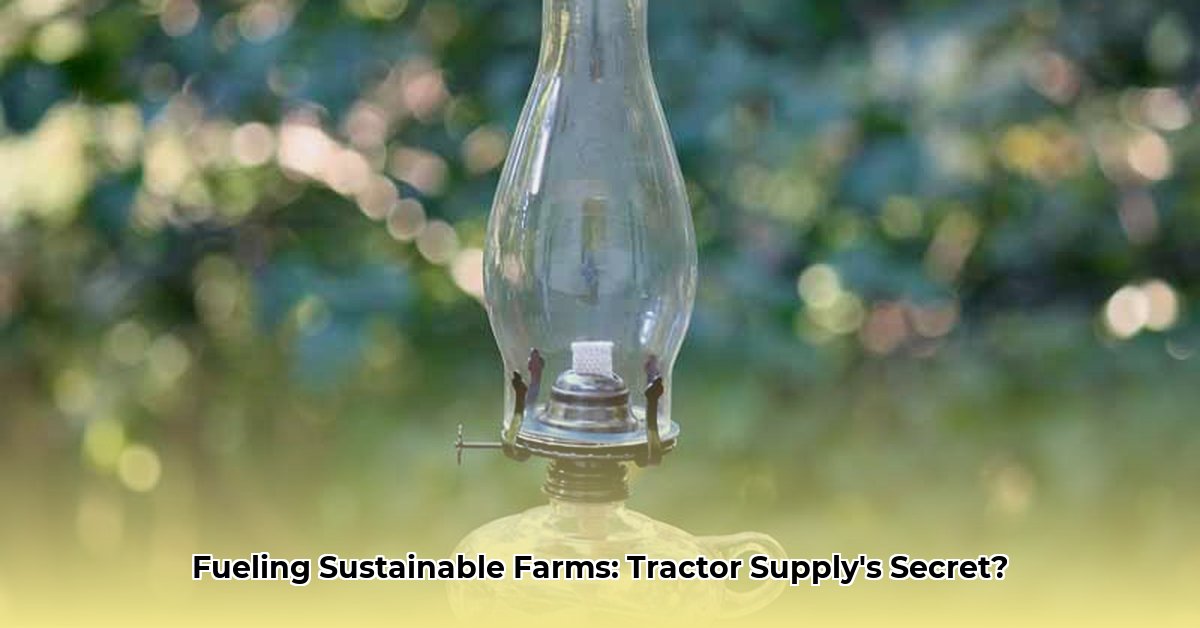
Illuminating the Debate: Paraffin Lamp Oil in Off-Grid Farming
The pursuit of sustainable, off-grid farming necessitates careful consideration of every aspect, including lighting. Tractor Supply lamp oil, a readily available and affordable option, often enters the conversation. But is this seemingly simple solution truly sustainable? This article examines the realities of using paraffin lamp oil for farm lighting, weighing its benefits against its environmental impact and exploring more sustainable alternatives. For more information on alternative lamp oils, check out this helpful resource on peanut oil alternatives.
The Allure of Affordable Illumination
Tractor Supply lamp oil's low initial cost is undeniably attractive to farmers working with limited budgets. The upfront expense is minimal, and the ongoing cost appears manageable at first glance. This simplicity appeals to those juggling diverse farm responsibilities and financial constraints. However, this initial cost advantage shouldn't overshadow a comprehensive cost-benefit analysis.
A Deeper Dive into Cost-Effectiveness
While the initial purchase price of lamp oil is low, long-term costs require careful consideration. How frequently will oil replenishment be necessary? Will fluctuating fuel prices significantly impact the budget? A solar-powered lighting system, while demanding a substantially higher initial investment, boasts minimal operating costs and a significantly longer lifespan. Therefore, the seemingly inexpensive lamp oil might ultimately prove more costly over time. Is the initial savings worth the potential long-term expense?
Environmental Impact: Beyond the Immediate Glow
The burning of paraffin oil, the primary component of Tractor Supply lamp oil, releases greenhouse gases into the atmosphere, contributing to climate change. This contradicts the principles of sustainable farming. Furthermore, indoor usage of oil lamps without adequate ventilation raises concerns about indoor air pollution and potential health risks for both humans and animals. These environmental and health repercussions must be weighed against the convenience of readily available light. What are the long-term health risks associated with paraffin lamp fumes compared to investing in cleaner alternatives?
Greener Alternatives: Sustainable Lighting Options
Before committing to paraffin lamps, exploring environmentally friendlier alternatives is crucial. Solar panels, although demanding a larger upfront investment, offer considerable long-term cost savings through minimal operating expenses and extended lifespan. Their emission-free operation significantly reduces the carbon footprint. Biogas presents another sustainable option, potentially generated on-farm from organic waste. While requiring an initial investment in a digester, it provides a renewable energy source for lighting and significantly reduces reliance on fossil fuels. How feasible are these alternatives for different sized farms and budget constraints?
Comparative Analysis: Choosing the Right Light Source
The optimal lighting solution depends on individual needs and priorities. The following table summarizes the key differences between paraffin lamps, solar power, and biogas lighting:
| Feature | Tractor Supply Lamp Oil | Solar Power | Biogas |
|---|---|---|---|
| Initial Cost | Very Low | High | Moderate |
| Ongoing Operating Costs | Low (fuel dependent) | Very Low | Low (waste dependent) |
| Environmental Impact | Moderate to High (emissions) | Very Low | Low |
| Maintenance | Low | Moderate | Moderate |
| Reliability | Dependent on fuel supply | High | Dependent on system status |
This comparison highlights the trade-offs involved. Can the higher initial investment in solar or biogas be justified by long-term savings and reduced environmental impact? The choice requires a careful balance between financial constraints and environmental stewardship.
The Holistic Approach: Sustainable Farming Beyond Lighting
Sustainable farming is a multifaceted endeavor. Every energy decision, from heating to equipment operation, contributes to the overall environmental impact. While Tractor Supply lamp oil might offer immediate cost savings, its long-term implications must be fully considered. A holistic approach requires evaluating the entire energy footprint of the farm, including lighting choices.
Dr. Anya Sharma, Professor of Environmental Science at the University of California, Berkeley, emphasizes, "Sustainable farming necessitates a long-term perspective. Short-term cost savings should not come at the expense of long-term environmental and human health consequences."
Toward a Sustainable Future: A Path Forward
This analysis reveals that while Tractor Supply lamp oil offers an inexpensive, readily available lighting solution, its long-term sustainability is questionable. A comprehensive assessment of financial and environmental factors, coupled with consideration of viable alternatives like solar and biogas, is essential for informed decision-making. The future of sustainable farming depends on making responsible choices today.